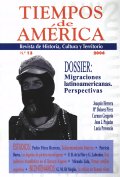Subcomandante Marcos: ¿Guerrillero del siglo XIX o del siglo XX?
Article Sidebar

Main Article Content
Pedro Pérez Herrero
Qn the first of January 1994, the Zapatista Army of National Liberation declared war on the government of Carlos Salinas de Gortari. Now, twelve years later, the autonomous communities of the Chiapas region continue to fight for their ideologies and defend their philosophies on life. Subcomandante Marcos has been the negotiator and media communicator throughout these years. For some analysts, the conflict came to a halt once it had crashed against a wall that it was unable to surpass. For others, it has only just begun; they believe that the fight is not restricted to the Chiapas region, yet represents a new organizational model for the world. For the first group of analysts, Marcos represents an anachronistic continuation of a guerilla fighter from halfway through the 20th century: the fight of a revolutionary who desires the continuation of the past. For the other group of analysts, he personifies a revolutionary of the 21st century: someone who struggles for the future. This article demonstrates how the political discourse of Subcomandante Marcos has evolved. The aim is not to explain what precisely happened, who participated, what were the foundations of the movement or what has been achieved year to date, yet to analyze how the philosophies of zapatismo have changed over time. In order to perform this study, two main sources have been selected: the principal claims of the EZLN (from which one can indisputably discover the figure of Marcos) and also the main discourses of the Subcomandante.
Article Details
Com citar
Pérez Herrero, Pedro. “Subcomandante Marcos: ¿Guerrillero del siglo XIX o del siglo XX?”. Tiempos de América: revista de historia, cultura y territorio, no. 13, pp. 3-28, https://raco.cat/index.php/TiemposAmerica/article/view/105679.